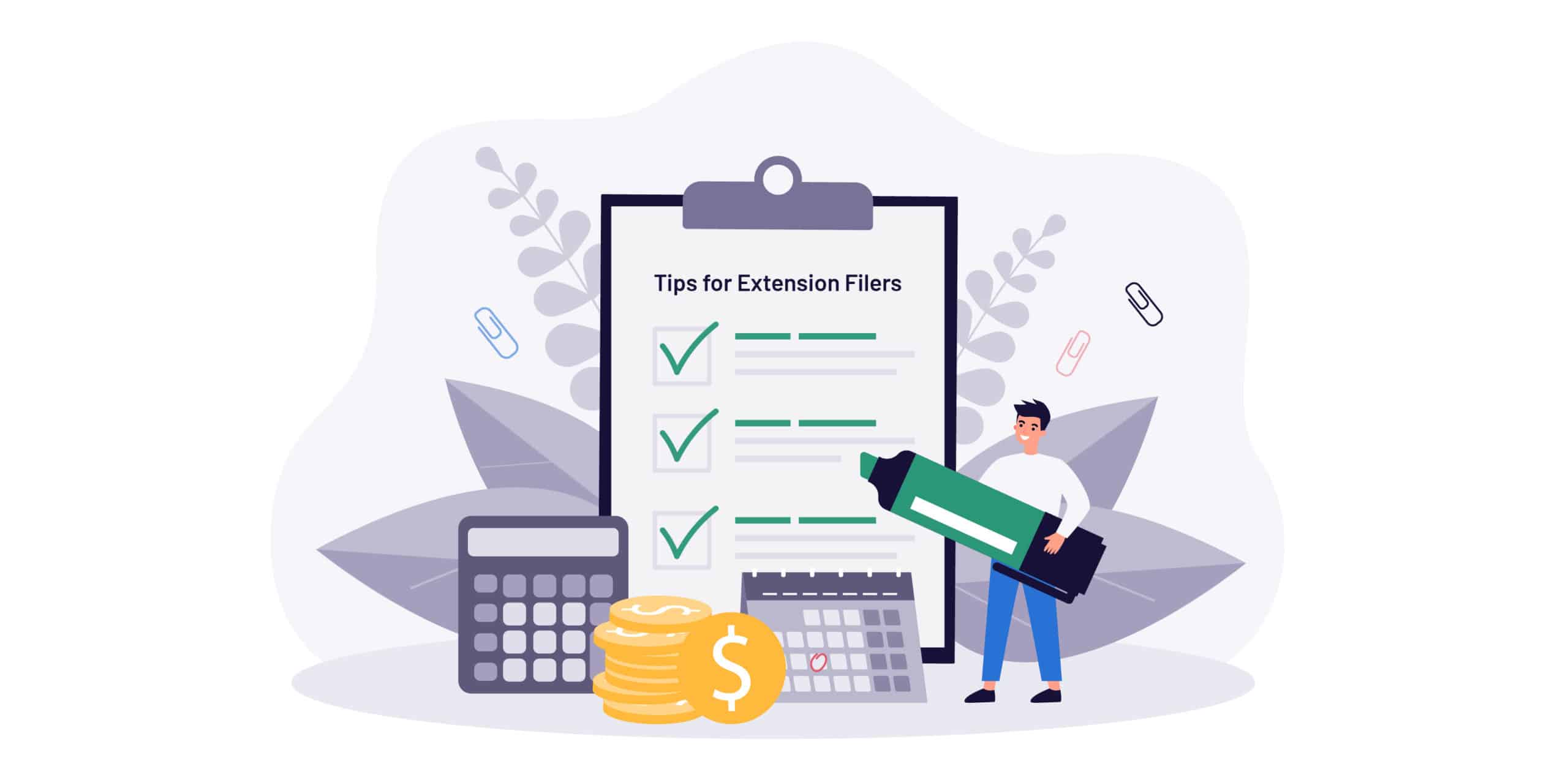Products You May Like
File a tax return extension for the first time this year? Here are a few things to consider before the Oct. 15 extension deadline.
1. E-file for a faster refund.
If you believe you’ll receive a refund after filing, the quickest way to get your money is to e-file your return using a trusted tax software. Completing your return by hand and submitting it using snail mail takes a lot more time for it to get in the hands of the IRS for processing.
Opting to have your refund direct deposited is another way to speed up the time it takes to get your money. When using tax software, simply add your bank account information at the end to have your money deposited directly into your account.
To help you select the right tax software, look out for these key features:
- Prioritized security – Trusted tax software works to protect your personal information by implementing appropriate safeguards, procedures, and practices for both physical and online security. That includes processes like identity authentication, vigorous monitoring, data encryption, and payment compliance to keep your credit or debit card information secure. Do your research to make sure the software you choose is known for keeping your private information private.
- Value pricing – You shouldn’t have to pay a premium price to get premium service, which is why it’s best to compare your options to help ensure you’re not paying more than necessary to file. Some DIY software providers offer the exact same services as the big guys but cost less.
2. Take advantage of IRS payment plans.
Filers who find themselves with a tax bill after completing their returns can take advantage of the IRS’ payment plans. The agency offers both short-term and long-term plans so you can pick which option is best for your situation. Pay as much as you can initially and then enroll in a plan so you can avoid racking up late payment penalties.
Find out what it takes to apply for a payment plan on the IRS website.
3. Avoid penalties by filing sooner rather than later.
Filing an extension in the heat of the tax season can certainly help ease the common stressors associated with completing your return, but that extra time can also create a procrastination habit. That’s especially true when considering all of the distractions that come throughout the summer months. Before you know it, the Oct. 15 deadline is upon you, and you’re left scrambling to beat the clock once again.
Unfortunately, in that scenario, filers sometimes find themselves still missing the deadline and incurring late filing penalties. We recommend avoiding that last minute dash and finding time to file way before Oct. 15. That way you give yourself enough time to complete your return in a relaxed manner and can avoid common filing mistakes that tend to happen when under pressure.
Consider this your friendly reminder to complete your return soon!
4. File ASAP for accurate Child Tax Credit monthly payments.
The IRS begins sending out monthly Child Tax Credit payments to qualifying families on July 15, 2021. The payment amount families are set to receive is based on their 2019 or 2020 tax return – whichever was filed last. If you qualify for the credit, the best way to help ensure your monthly payments are accurate is to file your tax return ASAP.
Filing now gives you the best opportunity to update the IRS on your tax situation so they can properly calculate the dollar amount you qualify to receive. Find out more about the Child Tax Credit and the monthly payments here.
The second round of payments are scheduled to be issued on Aug. 15, 2021.
5. Be extra mindful of typos.
This is your last chance to submit your tax return before incurring penalties. That means you need to get it right or risk losing your hard-earned money. As you enter information from your tax forms, documents and receipts, take a little extra time to review what you’ve typed in.
Double-check all numbers to ensure they are correct. Review your personal information, like names, birth dates and social security numbers to make sure you didn’t mistype or forget a dependent.
6. Save your tax return.
The IRS highly recommends all tax filers to keep a copy of their tax return each year. Having a copy on hand can help you amend prior year returns and more easily file next year.
Plus, there is a lot you can learn about how to improve your tax outcome the next time you file by taking adequate time to review your return.
7. You actually may have more time.
If you’re a member of the military or recently served in a combat zone, you generally have more time to file. After leaving a combat zone, military members typically have at least 180 days to file their return and pay any tax due.
ProTip: Active-duty military members and reservists can file for free using any TaxAct product.
TaxAct offers, products and services are subject to applicable terms and conditions.
